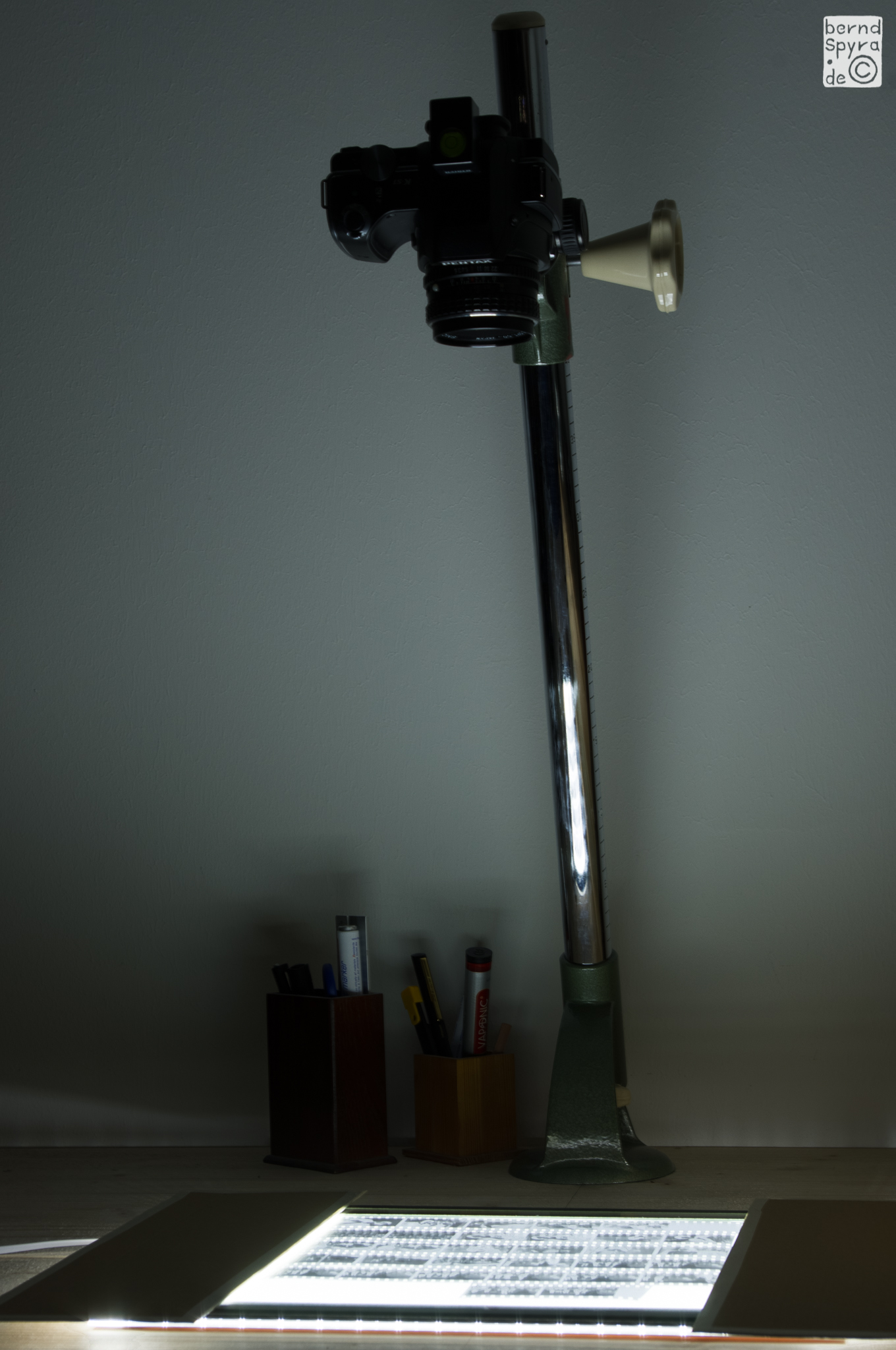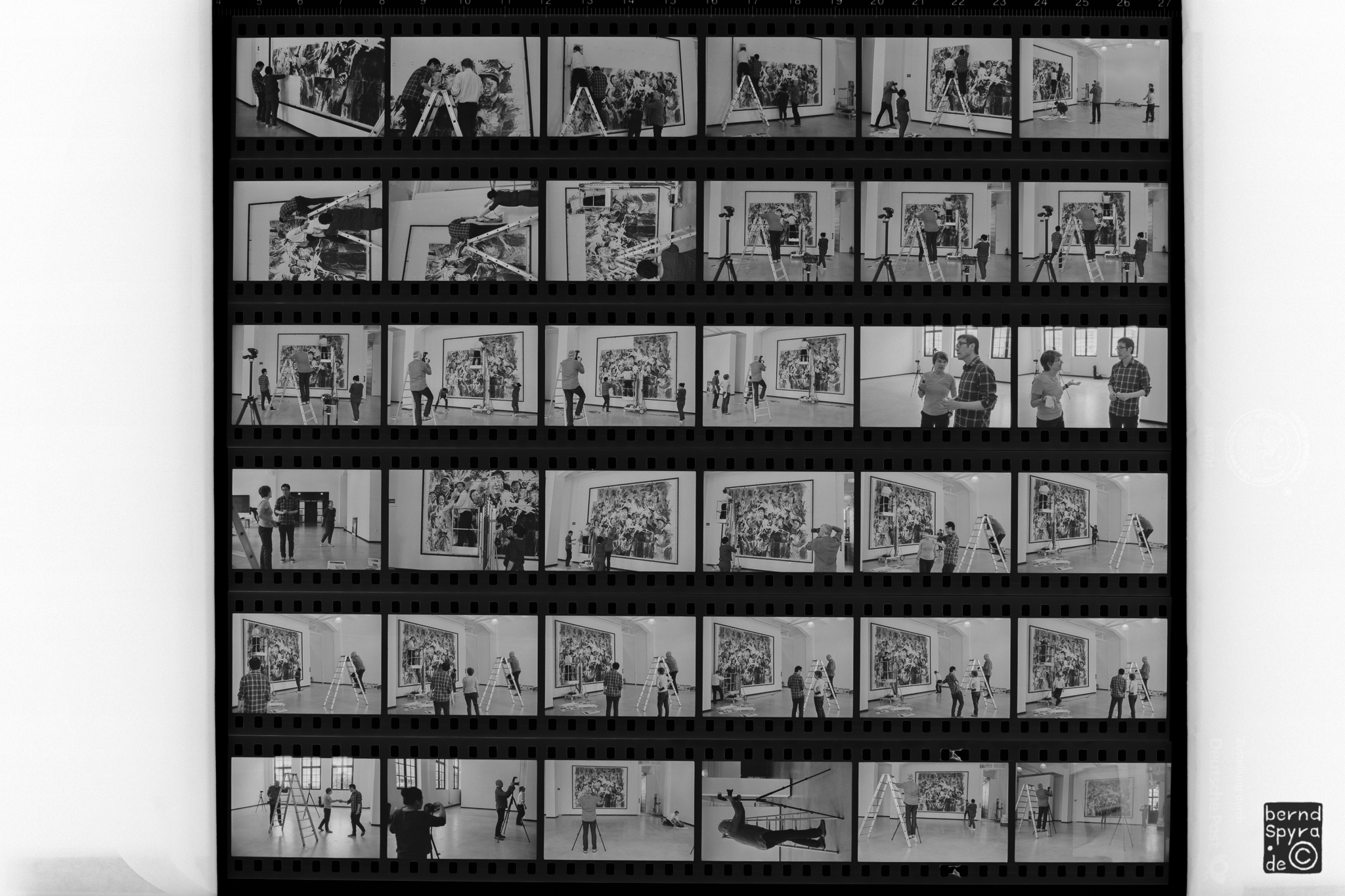
This is the setup I use to make “digital contact sheets” of the film strips which have been developed. To keep them flat, the negative strips are sandwiched between two sheets of anti-reflective glass on a simple LED-lighttable. A digital camera (Pentax KS-1) is positioned above this on an ancient (“made in West-Germany”) repro column. A spirit level in the acessory shoe of the camera helps to ensure its completely level. The digital camera (with an old but sharp Pentax SMC 1:3,5/35mm lens attached) produces digital pictures of all the negatives on a film in one frame, which can be easily inverted to show positive images and allow a first glimps of the “catch of the day”.
This setup is a reversal of the way traditional — analog — contact sheets are made: Here the film strips would be put on a sheet of photographic paper (the “sensor”) and pressed down (into contact) with a pane of glass, then exposed from above with the enlarger or a simple light bulb. After development of the photographic paper you would be left with the positive images of the negatives on the paper, looking somewhat like the file reproduced below.

Based on these digital contact sheets, better called overviews, it is decided which negatives to digitize using a slide copier, and later continue to work on fine-tuning said pictures. (This part of the process was already explained here)
Apart from selecting the pictures to immediately work on, the overview files serve as a visual catalog of the “photographic stream of consicousness” recorded with the camera. These overviews are printed too, and can later conveniently be leafed through in the folder that is used to store them and keep them in order. Each overview print is inscribed on the back with the catalog number of the corresponding film, for example “n0123”. This is also the corresponding name of the digital file on the computer. When a negative of that film is turned into another digital file, the number of the negative (being one of 36 exposures possible on a standard strip of 35mm film) is added to the catalog number to give the filename of a finished picture, for example “n0123-36”. This makes it equally easy to retrieve a negative from storage (no matter whether digital or on paper) when it is needed at some later point.